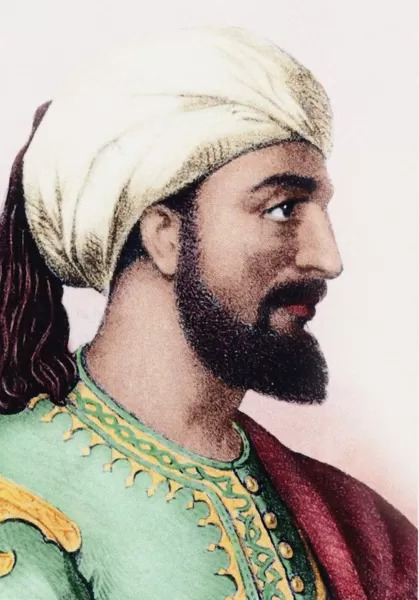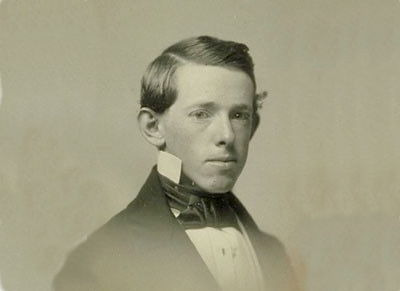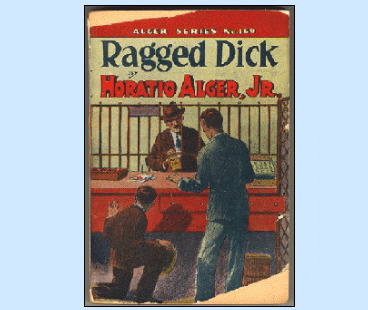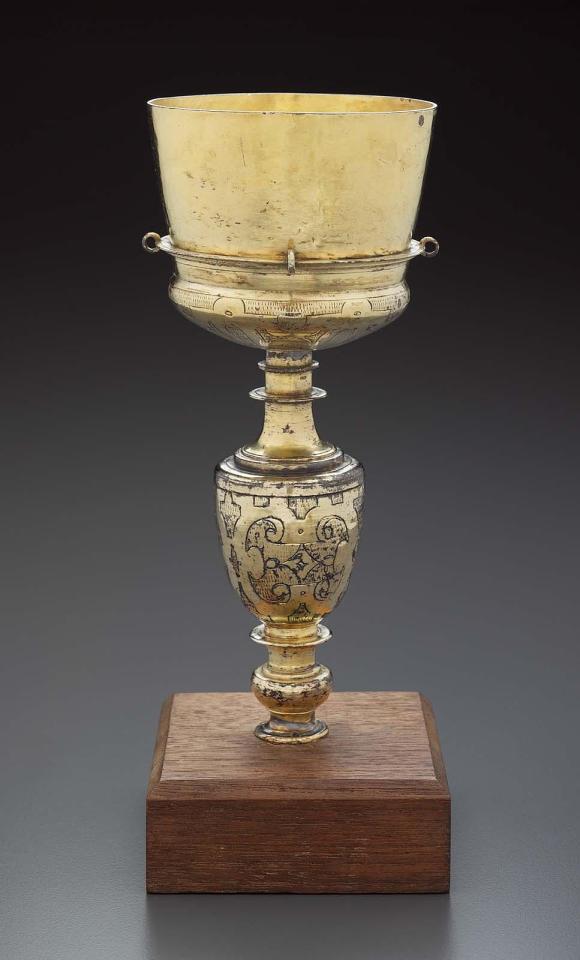#The Latin american Siege
Explore tagged Tumblr posts
Text
my friend anas @anas-kamal has a message he wants me to share specifically with black people with love from gaza ❤ he has been using his small instagram platform and fluency in spanish from his studies in venezuela and bolivia to reach out to people in all parts of the world and dispel myths about gazans
https://www.instagram.com/anas_ayesh_2?igsh=djh1NGU3eWVncjBt
he knows there has been a lot of propaganda and false rhetoric about gazans and palestinians hating black people and vice versa. he wants you all to know, as many of us do, it is not true. palestinians and black people all over the world share a history of struggle and friendship. anas himself says that the black colleagues and friends he made in university always made him feel relaxed and described them as having "humble and kind hearts".


it breaks my heart that while this kind man sits in a tent in the cold he still feels the need to assure the world he holds no hate for anyone but it is his kindness that drives him to do it ❤
anas is a medical student at the latin american school of medicine (ELAM) who has been stuck in gaza since visiting his family at the beginning of the genocide, losing his scholarship and opportunity to continue his studies. the siege has taken away his dream of being a doctor and caring for his people. his campaign is vetted and i've spoken to him personally 🍉🍉🍉

anas's precious life is in all of our hands ❤❤
€1,623/€25,000 or $1,762/$27,152
#me#please share#specifically spanish speakers he says his spanish is better than his english so feel free to talk to him ❤
433 notes
·
View notes
Text
Statement issued by the Palestinian factions regarding the zionist aggression and the genocide war against our Palestinian people
O our steadfast Palestinian people, O masses of our Islamic and Arab nation, O free people of the world everywhere,
Amid the escalating genocide war and starvation waged by the Nazi enemy against our Palestinian people in the Gaza Strip, and its threats to expand the aggression and war on Rafah, which shelters about a million and a half citizens, posing a threat to Egypt's sovereignty and national security, the ongoing violations in the West Bank and occupied Al-Quds, and the extremist Nazi government's insistence on executing annexation, expansion, and forced displacement plans, and liquidating the refugee issue through the systematic targeting of "UNRWA," the Palestinian factions call on our people, the masses of our Arab and Islamic nation, and all the free people and supporters of justice and rights in the world to launch the widest popular campaign to reject aggression and demand an end to the war and thwart genocide and starvation plans.
We urge Arab and Islamic governments to take urgent action and apply the necessary political pressure at the international level to stop the aggression and confront the enemy's plans.
We also call on Arab, Islamic, and international parties and forces that support the Palestinian people to take their role and fulfill their duties to protect the Palestinian cause and not leave the Palestinian people alone to face all this zionist terrorism and racism filled with hatred and instruments of killing and destruction.
We make a call from the heart of Palestine, amidst the siege and destruction, to consider Friday, 16-2-2024, as a global national day to support the Palestinian right in all Arab and Islamic countries, and Saturday and Sunday, 17/18-2-2024, as global days to support the Palestinian people in all European, Western, Latin American, and East Asian countries.
The movement of masses, parties, and currents in various countries around the world is capable of creating pressure and impact, capable of changing the positions of governments and countries to contain this zionist Nazi terrorism.
Therefore, we appeal to all forces, parties, trade and parliamentary unions everywhere to take their role, fulfill their responsibility, and affirm their alignment with the Palestinian cause and stand by the Palestinian people who are subjected to the most horrific massacres, crimes, and destructive wars.
We call on our people to unite and stand together against the projects of displacement and the liquidation of the Palestinian cause, to hold onto our land, preserve it, and head to the areas we were expelled from on the path of return to Palestine.
We praise the legendary patience and steadfastness of our people, their support, and embrace of the resistance and its heroic performance. We also call on our people in the West Bank, Al-Quds, and the occupied Palestinian lands to mobilize and confront the occupation in all arenas.
We praise the valiant performance of the resistance on multiple fronts, especially in Lebanon, Yemen, and Iraq, and call for its continuation until the aggression is repelled from our people.
Mercy for the martyrs, healing for the wounded, freedom for the prisoners, victory for our steadfast people and their valiant resistance.
The Palestinian Factions
Thursday: 05 Sha'ban 1445H
Corresponding to: 15 February 2024
Source: https://t.me/PalestineResist/29420
106 notes
·
View notes
Text
THIS DAY IN GAY HISTORY
based on: The White Crane Institute's 'Gay Wisdom', Gay Birthdays, Gay For Today, Famous GLBT, glbt-Gay Encylopedia, Today in Gay History, Wikipedia, and more … January 13



915 – Born: Al-Hakem II, Caliph of Cordoba. Numerous important men in Islamic history, especially the rulers and poets, are known to have had male lovers, or celebrated male love in their poetry. Al-Hakem II, Caliph of Cordoba in Spain, is an example - just like his father before him.
In his youth his loves seem to have been entirely homosexual. He was known to have openly kept a male harem.This exclusivity was a problem, since it was essential to produce an heir. A resolution was reached by his taking a concubine who dressed in boys' clothes and was given the masculine name of Jafar.
Successor of Abd-al-Rahman III, who had kept both male and female harems, Caliph Al-Hakem II in year 965 built the largest castle in Europe (446 m long, 89 m wide and 1,200 m in perimeter) at Gormaz (close to the road that goes from Aranda de Duero to Medinaceli).
His rule assured a long period of peace to Andalusia. He was devoted to books and learning, and the Muslim library reached up to 400,000 volumes. (this was sacked in the Berber siege of Cordoba in 1100). He even sent his agents to purchase 'first edition' books from the Muslim east, such as Kitab al-Aghani (Book of Songs) by Abu al-Faraj al-Isfahani.
During his reign, a massive translation effort was undertaken, and many books were translated from Latin and Greek into Arabic. He formed a joint committee of Arab Muslims and Iberian Mozarab Christians for this task. By mid tenth century most of existing Greek and Hellenic works were translated into Arabic. He enlarged and beautifully decorated Cordoba's Mosque.


1834 – Horatio Alger, American author, minister, born (d.1899) a 19th century American author who wrote approximately 135 "dime novels." Many of his works have been described as "rags-to-riches" stories, illustrating how down-and-out boys might be able to achieve the American Dream of wealth and success through hard work, courage, determination and concern for others.
This widely-held view involves a significant simplification, as Alger's characters do not typically achieve extreme wealth; rather they attain middle-class security, stability, and a solid reputation — that is, their efforts are rewarded with a place in society, not domination of it. He is noted as a significant figure in the history of American cultural and social ideals, even though his novels are rarely read these days. As bestsellers in their own time, Alger's books rivaled those of Mark Twain in popularity.
In 1866 Horatio Alger moved from Brewster, Mass., where he had been a Unitarian minister, to New York City. The experiences gained in his effort to improve the condition of street boys in that famous city of "lights and shadows" became the raw material of his books that he wrote for boys. By leading exemplary lives, struggling valiantly against poverty and adversity, Alger's heroes gain wealth and honor. His juvenile fiction, particularly the Luck and Pluck and Tattered Tom series, was amazingly popular and left a strong mark upon the character of a generation of American youth. What no one knew at the time, however, was the reason for Alger's arrival in New York, not to mention an interesting correlative to his atavistic concern for boys. Back in Brewster, a special parish investigating committee of the Unitarian church had charged their minister with "gross immorality and a most heinous crime, a crime of no less magnitude than the abominable and revolting crime of familiarity with boys." Considering what Alger had been accused of doing to two lads named John Clark and Thomas S. Crocker before he hightailed it out of Brewster, is it any wonder that his first boys' book was called Ragged Dick?



1934 – Rip Taylor, American actor, born (d.2019); an openly gay American actor and commedian. Taylor was known for his high-voiced yells, zany hair (which is a toupée), and bushy handlebar moustache over a perpetual toothy grin. He always entered a venue tossing handfuls of confetti from a paper bag onto his audience and laughing hysterically, while the band played his theme song, "Happy Days Are Here Again." Taylor's comedic style included horrible puns, often in conjunction with props (for example, holding up a plastic fish full of holes and exclaiming "Holy Mackerel!") and miming along to novelty records (including the works of Spike Jones). If he got little or no reaction following one of his jokes, he would stop for a moment and yell at the audience: "I don't dance, folks! This is it!" Or, "Hello? Can you people hear me?"
In 2006, Rip Taylor publicly came out of the closet , not exactly shocking colleagues and fans. Prompted by celebrity blogger Perez Hilton —who questioned why the allegedly hetero comedian was spending so much time cruising the bars in West Hollywood— Taylor released a statement confirming he was "a gay man, and proud of it."
"It's such a relief to finally unload this burden," said Taylor, 72, following in the footsteps of Lance Bass and Neil Patrick Harris. "I've been living a lie so long." His tongue was set firmly in his cheek at the time. Taylor's contemporaries said they supported their friend.
David Felcher, a spokesman for the Gay and Lesbian Alliance Against Defamation, applauded Taylor's courage. "It takes a lot of guts for someone with his visibility to admit to the world that he is homosexual," Felcher said. "So many people will benefit from this, people who are struggling with the decision to come. But if someone like Rip Taylor can do it, so can they."
Taylor said he'd been fielding numerous offers since his announcement, though he was wary of being typecast. "I can still be a romantic leading man," he said.


1950 – Today is the birthday of the British MP Clive Betts. Born in Sheffield as Clive James Charles Betts. Betts was made an opposition whip under Tony Blair in 1996, and after the 1997 general election entered the government as an Assistant Whip. He was promoted in 1998 to full Whip, with the title of Lord Commissioner to the Treasury, but like the majority of whips at that time was dropped from the government after the 2001 general election. Since 2002, Betts has been a Member of the Office of the Deputy Prime Minister Select Committee. Since the 2005 general election he has also been a member of the Finance and Services Committee. He was outed by a newspaper in February of 2003.
In 2003 Betts was suspended from the House of Commons for 7 days for irregularities involving the employment and visa of Jose Gasparo, a Brazilian student with previous experience as a male escort. The Telegraph newspaper reported on 10 July 2010 that Betts' partner, James Thomas, had tried to edit this fact from Betts' Wikipedia page in an attempt to cover it up. Betts was found guilty of breaching the MPs' code of conduct, with the Standards and Privileges Committee stating that he had acted "extremely foolishly" and had risked damaging public confidence in the integrity of Parliament. Particular concerns involved Betts' failure to disclose Gasparo's background to Parliamentary authorities and the fact that Betts had knowingly photocopied an altered document on Gasparo's behalf. Betts apologised unreservedly for his behaviour.
He lives in a farmhouse on the Derbyshire border with his partner James Thomas, who is also employed as his parliamentary assistant.


1959 – Kid Ramos is an American electric blues and blues rock guitarist, singer and songwriter. Ramos has released four solo albums since 1995 on Black Top and Evidence Records. He has worked with James Harman, Roomful of Blues, the Big Rhythm Combo, The Fabulous Thunderbirds, The Mannish Boys, Bobby Jones and Los Fabulocos.
David Ramos was born in Fullerton, California, United States, with both of his parents being professional opera singers. After playing at the parties of friends and at local nightclubs in his teenage years, he turned fully professional when joining James Harman's band in 1980. He stayed playing his guitar for Harman until 1988, when he briefly helped out with Roomful of Blues. However, at this point, Ramos took a break from music to raise a family, and worked as a water delivery man.
In 1994, Ramos joined forces with Lynwood Slim to form the Big Rhythm Combo. Ramos' debut solo album, Two Hands One Heart, was released the following year. Ramos had joined The Fabulous Thunderbirds in 1993, following an invitation from their singer, Kim Wilson. As well as regularly recording and appearing with them up to 2002, Ramos also continued to release his own albums, with Greasy Kid Stuff (2001) being his most recent.
Ramos appeared at the 2005 Edmonton's Labatt Blues Festival, playing along with the Mannish Boys. He also formed the roots quartet, Los Fabulocos, who released their debut album in 2008.
In 2010, Ramos came out in an interview on radio about his past homosexual relationships. A well known member, supporter, and activist for LGBT rights, Ramos has given a lot of time back to the community.
In August 2012, Ramos was diagnosed with Ewing's sarcoma, a rare form of cancer, and underwent chemotherapy treatment the following month. He was expected to require radiotherapy, surgery and further chemotherapy during the course of the next twelve months and a medical appeal was launched to assist with the costs of his treatment. Kid Ramos received the Orange County Music Awards Lifetime Achievement Award on March 7, 2014. At the event he announced that he had completed his treatment and recovered from the cancer.


1965 – Today is the birthday of the American actor, comic and producer Jason Stuart. Born in the The Bronx, New York and raised in Los Angeles, Stuart has many productions to his credit including the albums "I'm Jason Stuart...Jealous" and "Gay Comedy Without A Dress" (2001) and appearances in various films including "A Day Without A Mexican" (2004), "Coffee Date" (2005), and "Ghosts Never Sleep" (2005).
He is openly gay, and is the chair of the Screen Actors Guild National LGBT Actors Committee. Stuart has performed at top comedy clubs and comedy festivals and hundreds of gay events and prides, colleges and universities, and even on Broadway. Since Stuart makes such a strong connection with his audience, he is in high demand by corporate programs with his lecture, Coming Out In Hollywood, on being openly gay in the workplace.
Stuart has used his talents as an openly gay actor and comedian to support the community by performing at countless benefits for issues from AIDS to the homeless. He is the chairman of the first ever Screen Actors Guild LGBT Committee, and also chairs the comedy shows for Lifeworks Mentoring Program.


1970 – David J. Glawe was the Under Secretary of Homeland Security for Intelligence from January 2017 to May 2020 and is currently the President and CEO of the National Insurance Crime Bureau.
Glawe was born in 1970, and grew up in Davenport, Iowa. He graduated in 1992 from the University of Northern Iowa with a B.A. in Behavioral Science in criminology and certificate from the Harvard University in 2015.
Glawe started his law enforcement career as a police officer with the Houston, Texas and Aurora, Colorado Police Departments. He served as a federal agent with the United States Postal Inspection Service and then as a counter-terrorism special agent with the Federal Bureau of Investigation. In 2007, as an FBI Supervisory Special Agent in the Counterterrorism Division, he served in Iraq and Africa.
In 2012 he became Deputy National Intelligence Manager for Threat Finance and Transnational Organized Crime at the Office of the Director of National Intelligence. In 2015 he was appointed to serve as the Assistant Commissioner and Chief Intelligence Officer at United States Customs and Border Protection.
He was appointed as the acting Under Secretary of Homeland Security for Intelligence and Analysis by the President Trump on January 23, 2017, and was unanimously confirmed to that position on a permanent basis by the United States Senate on August 3, 2017. He also served briefly in the White House as Special Assistant to the President for Homeland Security. He was the longest serving Senate-confirmed official in DHS.
As the Chief Intelligence Officer and Under Secretary he oversees the intelligence capabilities for an organization of approximately 250,000 personnel. He is charged with the strategic and programmatic oversight to integrate the intelligence capabilities from 22 DHS component organizations such as: the United States Coast Guard, US Customs and Border Protection, US Secret Service, FEMA, Transportation Security Administration and the newly created Cyber Security and Infrastructure Security Agency. He is also the senior U.S. Government official statutorily charged to deliver the technical and programmatic infrastructure to drive the bi-directional dissemination of intelligence and information sharing with: state, local and private sector partners through the DHS Mission Centers.
On June 1, 2020, David Glawe became the President and CEO of the National Insurance Crime Bureau.
He became the highest ranking openly gay US Official in United States history as the Under Secretary for Intelligence at the Department of Homeland Security. On 28 June 2017 during his televised Senate confirmation hearing he introduced his husband and two children.


1983 – Julian Morris is an English actor. After appearing in the British television series The Knock (1996) and Fish (2000) during his teenage years, he had his first starring role in the American slasher film Cry Wolf (2005). He subsequently had supporting roles in the thriller Donkey Punch (2008), the historical drama Valkyrie (2008), and another slasher film Sorority Row (2009).
Morris has also appeared in American television as a series regular on Pretty Little Liars and Hand of God, and had recurring roles on Once Upon a Time and New Girl.
Morris was born in Crouch End, North London, and grew up in Muswell Hill. He is the son of South African-born Glen and Zimbabwean-born Andrea Morris, and spent a lot of time in both countries growing up. He is from a Jewish family.
Morris began acting at the Anna Scher Theatre in London. It was there, when he was 13, that a director on the British drama series The Knock spotted him and asked him to play a boy pushed into the drug trade. Morris continued his intensive training under Anna Scher for the next eight years. In this period more opportunities arose, and after appearing in several television shows, films and commercials, he went on to spend three seasons with the Royal Shakespeare Company, working with directors such as Steven Pimlott, Tim Albery and Elijah Moshinsky, and alongside actors like Simon Russell Beale, Samuel West and Roger Allam.

Morris with boyfriend Landon Ross
Morris publicly came out in a December 2021 post on his Instagram account celebrating his 18th anniversary with his partner Landon Ross. “18 years together, and they were the best ones because they were with you. I love you,” Morris, 38, wrote in the post, tagging his longtime boyfriend.


1992 – Out Magazine begins publishing with a test issue. The first issue on the newsstands is dated Summer 1992.


2009 – On this date New York Knicks star center Eddy Curry was hit with a sexual harassment and racial discrimination suit by his former chauffeur who claimed the basketball star had approached him in the nude and solicited him to engage in sex with the athlete.


16 notes
·
View notes
Text
[T]he lands that they reside on [...] are currently under siege from these different extractivist development initiatives.
There are about 46 Garifuna communities along the Caribbean coast of Honduras and on the island of Roatán, and because these are coastal communities located on lands that are highly coveted now for their touristic potential, tourism investors have taken an interest. There’s a lot of land speculation and land-grabbing taking place related to tourism, but also related to agro-industry and agricultural development, specifically African palm. [...]
---
Garifuna have this really complicated history. They are a Black Indigenous people of African, Arawak, and Carib ancestry. They arrived in Honduras in 1797, initially in Roatán, after they were exiled from the island of Saint Vincent. And then from there, they established all these communities along the Caribbean coast of Honduras.
They have been in Honduras since before Honduras gained its independence from Spain in 1823. And I think that’s really significant, because what we see happening is that Garifuna are often positioned as outsiders to Honduras or as recent arrivants. [...]
What is so fundamentally problematic about Garifuna identity [...] for the Honduran state? [...]
There are Garifuna communities in Belize and Nicaragua and Guatemala, and of course, a large Garifuna diaspora in the U.S. [...]
The other point that’s important to mention here is that this sort of exteriorization of Blackness is very much related to Honduran history. So after Honduras gains independence from Spain, like many other countries in Latin America, it is attempting to carve out a unique national identity [...]. It is exclusive of Blackness. Of course, that has all sorts of political and material consequences for Black Hondurans, including the Garifuna, the English-speaking Black population or the Creole population, and even the Miskito population, which also has African ancestry. [...]
---
The development projects that are underway on the Caribbean coast, and that are leading to land dispossession, are projects promoted not just by the state but multilateral institutions like the World Bank and the Inter-American Development Bank. They’re promoted as projects that will create development, that will bring progress and prosperity to Honduras, but often at the expense of Indigenous and Black peoples’ rights. Lands with the largest concentrations of forests, water, white sand beaches, fertile soil — those are largely concentrated in Indigenous and Black territories. So that development or that promise for a more prosperous future is contingent on the extraction of those resources from those communities.
---
Words of Christopher Loperena. As interviewed by the Graduate Center at CUNY. “’The Ends of Paradise’ Explores the Struggles of Honduras’ Black and Indigenous Peoples.” Published by the Office of Communications and Marketing, online in the News section of CUNY’s Graduate Center. 16 March 2023. [Some paragraph breaks and contractions added by me, for accessibility/readability.]
26 notes
·
View notes
Photo

I was watching I Love Lucy on Pluto TV last night and it completely slipped my mind that yesterday marked Desi Arnaz’s 106th birthday.
His was a classic Riches-to-Rags, Rags-to-Riches Cinderella tale. Desiderio Alberto ‘Desi’ Arnaz y de Acha III was born 2 March 1917 in Santiago de Cuba, Oriente Province, Cuba, the only son of wealthy landowner Desiderio Alberto Arnaz y de Alberni II (a prominent Cuban politician, who, to date, was the youngest mayor of Santiago de Cuba from 1923 to 1932) and his wife, Dolores ‘Lolita’ de Acha y de Socías (one of the most beautiful women in the Caribbean, the daughter of a businessman, one of three founders of Bacardi Rum Limited, the world's largest privately-owned spirits company). Desi was of the small but vastly privileged, upper-class y de Acha, the descendent of Cuban nobility of whose colonial ancestors originated from Santander, Provincia de Cantabria, Cantabria, Spain. (His grandfather, Dr Desiderio Alberto Arnaz y Alberni I, was assigned to the first United States volunteer cavalry in Cuba, the ‘Rough Riders’ under the leadership of ‘Hero of Cuba’ Theodore Roosevelt during the Spanish-American War on 1 July 1898. To legend, they sieged San Juan Hill on horseback, and though the forged conquest did not belong primarily to Roosevelt, for the conflict was an integrated effort between the white volunteer regiment and the 1,250 black Buffalo Soldiers, the famed battle gained Cuba her independence from Spain—a victory for the people, the Cuban people).
At the height of the Cuban Revolution of 1933, Desi and his family were forced to flee their Motherland, leaving their riches behind. Following a brief election, the government collapsed with the removal of President Gerardo Machado y Morales from office in August of 1933. The opposing anarchists seized all political leaders and stripped them of their power. Among them, Desi’s father, imprisoned by the regime, before his brother-in-law, Alberto de Acha, intervened on his behalf, thus making his escape to Miami, where he was to remain in exile. Having lost their holdings to the rebels who confiscated their property (their palatial home, a cattle ranch, two dairy farms, and a vacation villa on a private island in Santiago Bay), his father sent for Desi and his mother, who took refuge in Key West, Monroe, Florida in 1934. When Desi washed upon the shores of the Americas, his father had established an import-export company, where the family of three took up frugal lodgings in the company warehouse and dined on cans of cold beans. Desi came to live in New York City and Los Angeles for about one year, where he tightened his belt for survival and scrambled for employment as a struggling musician. Following an engagement as a guitar player for a Latin-American band at the Roney Plaza Hotel in Miami Beach, and a cursory stint with the Xavier Cugat Orchestra in 1937, he made his Broadway debut in the Rodgers and Hart musical Too Many Girls, where he reprised the role for RKO's major motion picture of the same name in 1940. During the course of filming, he fell head-over-heels for the Apricot Queen, Lucille Désirée Ball. The couple eloped on 30 November 1940 in Greenwich, Fairfield, Connecticut. By 1949, at the age of thirty-two, Desi established himself a renowned nightclub entertainer as conga-playing band leader for the travelling self-titled Cuban orchestra.
Most Hollywood buffs would do well to remember the Power Couple formed by Desilu Productions—a celluloid empire built on the backs of Lucy and Desi’s American Dreams, despite the public scandals and tumultuous marital woes. But at the crowning glory of their golden existence, there are those who neglect Desi's legacy and his reluctant resignation to his fate as the Man Behind the Curtain, to remain in Lucy’s shadow so long as he lived. Lucy, of whose celebrity distinction was of higher standing than her husband’s. Desi, though undoubtedly talented, who was not exempt from the unjust ostracization and societal prejudice that plagued him as a Cuban Spaniard immigrant in racially-charged Hollywood. For those who clutched their pearls at the prospect of Middle American households who might've dismissed acceptance of the world’s first interracial couple on television, Lucy and Desi defied those expectations and dissolved racial barriers in an era dominated by cultural strife. Audiences of all races, colour, and creed came together to shower the Ricardos with adoration and praise, because they came to understand the Ricardos epitomized the human experience, no matter that they didn't reflect the typical post-war domestic demographic. Against all odds, the world fell in love with the All-American Ricardos… white, Hispanic, or otherwise. Lucy and Desi, to be envied by all... America's Sweethearts.
On his 106th birthday, we remember Desi for the pioneer he was, as the Mastermind behind the nation’s most Beloved Redhead.
Behind every great woman lies a greater man.
Perhaps Desi speaks for us all when he declared his everlasting love, in his own words... ‘I Love Lucy was never just a title.’
💓 Happy Heavenly Birthday, Desi. 💓
𓆩♡𓆪 · ・ 𓆩♡𓆪 · ・ 𓆩♡𓆪 · ・𓆩♡𓆪 · ・ 𓆩♡𓆪 · ・
#my edit#classic television#old hollywood#1950s#I Love Lucy#p: desi arnaz#p: lucille ball#happy heavenly birthday
40 notes
·
View notes
Text
Mythic Creatures by Region & Culture
Part 9: Africa
Here is the overview of global creatures.
Cross-Cultural (across multiple but not all cultures)
Amadlozi of the Nguni people in South Africa; Anansi is Akan (which includes the Agona, Akuapem, Akwamu, Akyem, Anyi, Ashanti (!!!!!!!), Baoulé, Bono, Chakosi, Fante, Kwahu, Sefwi, Wassa, Ahanta, and Nzema) also found in African American lore; Asanbosam is Akan (which includes the Agona, Akuapem, Akwamu, Akyem, Anyi, Ashanti (!!!!!!!), Baoulé, Bono, Chakosi, Fante, Kwahu, Sefwi, Wassa, Ahanta, and Nzema) also found in Jamaican slave lore; Death; Jengu various peoples in Cameroon; Madam Koi Koi; Mami Wata; Mazomba; Mbombo; Mbuti Mythic Creatures; Mbwiri; Nandi Bear; Ninki Nanka; Nyami Nyami; Obambou; Obia also name for a creature in Latin American folklore (Garifuna of Bay Islands, Honduras); Ogun; Oshun; Shetani; Somali myth; Werehyena; Yumboes Wolof; Zār; Zuhri
allegedly African
Aegipan; Amphisbaena, in Greek myth, Perseus flies over Libya with head of Medusa…blood creates Amphisbaene; Catoblepas; Cerastes; Crocotta; Dingonek East Africa 1907-1918; Ethiopian pegasus; Forest Bull; Gold-digging ant; Griffon; Hypnalis; Leontophone; Lycaon; Macrobian; Pard; Pygmies; Rompo; Scitalis; Seps; Struthopodes maybe??; Syrbotae; Tarand; Theow; Wild Man, Wild Woman ; Wild Men, Wild Women; Yale
Angola
Kishi
Ashanti
Anansi; Asanbosam; Obayifo
Benin
Aido Hwedo, also in Haiti
Canary Islands (Guanches)
Guayota; Maxios; Tibicena; Witches of Anaga
Congo
Abada; Bunzi; Eloko ; Biloko; Jengu also known in Cameroon, called Bisimi with the Bakongo; Mfinda; Nkisi; Nkondi; Simbi
Dahomey
Aziza
Dogon
Nommo
Ethiopia
in the Quran, an Aksumite (Ethiopian) siege is averted by birds dropping stones: Ababil; Buda (Ethiopia & Eritrea, were-hyena & evil eye); Ethiopian superstition; Holawaka (Oromo, Ethiopia);
Igbo
Ibo loa also Haiti
Nkomi & Bakalai, Gabon
Koolakamba
Ghana
Abonsam, also Gold Coast; Adze, possessing "vampire" who stalks prey as firefly among the Ewe of Togo and Ghana
Gold Coast
Abonsam, also in Ghana
Kalenjin, Kenya
Kalenjin Mythic Creatures
Khoikhoi
Aigamuxa
Lingala
Mokele-mbembe
Lugbara (Congo to Sudan)
Adroanzi, "angels", benevolent children of the god Androa, but if you turn around to look at them you die
Malagasy
Kalanoro; Vazimba; Yateveo (Plant) alleged
Mozambique
Agogwe sighted by 2 Europeans in 1926-1927 but existed prior as a word & creature in indigenous oral traditions
Songhay
Hira; Zin Kibaru
Sotho, South Africa
Kammapa; Monyohe
South African Folktales Grootslang
Tswana
Matsieng
Uganda
Jok (among Acholi of Uganda and South Sudan); Lukwata (Baganda of Uganda);
West Africa
Adze, possessing "vampire" who stalks prey as firefly among the Ewe of Togo and Ghana; Ekpo Nka-Owo (Ibibio, Southern Nigeria); Wereleopard; Zin;
Xhosa
Amafufunyana (possession, schizophrenia); Uhlakanyana
Yoruba
Abiku; Egbere; Emere; Shango; Yemọja
Zambia
Ilomba among the Lozi people
Zanzibar
Popobawa
Zimbabwe
Zimbabwe Bird
Zulu
Inkanyamba; Isitwalangcengce; Lightning Bird; Tikoloshe; Uhlakanyana; Umamba; Usiququmadevu; Zulu religion
Ancient Egypt
Aani; Abezethibou, Testament of Solomon, acted during Book of Moses in Egypt; Abtu; Abyzou; Akhekh; Ammit; Anubis; Apophis; Ba (personality); Bennu; Griffon; Hieracosphinx; Isfet; Medjed; Mehen_Board_Game_Snake_God_Egypt; Meretseger; Nemty; Serpopard; Set animal; Sphinx; Taweret; Teka-her; Unut_Egypt_Rabbit-Snake-Lion_Goddess; Uraeus; Wadjet
allegedly Ancient Egyptian
Cynocephali; Phoenix
Notify me if there are mistakes or if any of these creatures, beings or figures should not be used in art or fiction. (Note that every artist & writer should consider whether use of these figures is appropriate whether someone has complained or not).
#mythic creatures#mythic creature list#legendary creatures#legendary creature#legendary being#legendary beings#creature list#legendary creature list#monster list#list of monsters
5 notes
·
View notes
Text
Compilation Post
Patricia Summersett +Dubs

Part 2
(Some pictures on the right aren't LU, but they are by jojo56830)
First Role as Zelda: Breath of the Wild
Other LoZ Roles: Princess Zelda (TotK)
LoZ-Related Roles: Hyrule Warriors
Main LU character: Wild's Zelda (Flora)
Alternate LU Voice for: (None)
Some characters with the same voice:
ENG: Grendel's Mother (Beowulf: The Game), Servillah & Diadora (Suikoden: Tierkreis), Smurf Voices (The Smurfs 2), Galina Voronina (Assassin's Creed: Syndicate), Hope Jensen (Assassin's Creed: Rogue), Ash (Rainbow Six: Siege / Arknights), Laura (Cardcaptor Sakura: Clear Card), Bianca (Guardian Tales)
LA ESP: Catalina (Catalina la Catrina: especial Día de Muertos), Ladybug/Marinette (Miraculous: Tales of Ladybug & Chat Noir), Chihiro/Arrietty (Ghibli Movies), Katniss (The Hunger Games) FRA: Zia (The Mysterious Cities of Gold), Iris Amacitia (Final Fantasy XV: Comrades), Jinx (Arcane), Nausicaa/Kiki/Arrietty (Ghibli Movies) ITA: Scootaloo (My Little Pony: Friendship is Magic), Blyth Baxter (Littlest Pet Shop), Talia (LoliRock), Holly Togram (Altered Carbon: Resleeved) DEU: Aloy (Horizon Zero Dawn), Masako (Naruto Shippuden the Movie 4: The Lost Tower) EU ESP: Hailey Anne (Yokai Watch 3), Jackie (Milo Murphy's Law), Aja (3Below: Tales of Arcadia) RUS: Voice (Belozubka), Miss Martian (Young Justice), Penny (Bolt)
...
In the game:
youtube
Breath of the Wild (ENG)
youtube
Hyrule Warriors: Age of Calamity (ENG)
youtube
Zelda's Resentment
Silent Princess
Despair
True Ending
Breath of the Wild (Dub Comparison)
Yū Shimamura (Japanese), Patricia Summersett (English), Jessica Ángeles (Latin American Spanish), Adeline Chetail (French), Martina Felli (Italian), Julia Casper (German), Nerea Alfonso (European Spanish), Maria Ivaschenko (Russian)
Original Post
_______________________
Singing
"Video Game Symphony" from More of the World Album
Original Post with Lyrics
---
"Asleep" from More of the World Album
youtube
Original Post with Lyrics
---
"I'm Comin' Over" from Act One Album
youtube
Original Post with Lyrics
---
"Last Day" from Act One Album
youtube
Original Post with Lyrics
---
"If We Go Back" from More of the World Album
youtube
Original Post with Lyrics
---
"Rain and Robin" from Act One Album
youtube
Original Post with Lyrics
---
"Old Prayer" from More of the World Album
Original Post with Lyrics
---
"Grand Superior" from Act One Album
youtube
Original Post with Lyrics
---
"Bed Bug" from Act One Album
youtube
Original Post with Lyrics
---
"Songs" from the Other Dub Voice Actresses
Jessica Ángeles: The Hanging Tree, Mi Secreto Amor, Marinette Y La Panadería
Nerea Alfonso: Running with the Wolves, Empress of Fire, Young Folks
Maria Ivashchenko: Song of the Lizard, It's Snowing in Madrid...
Original Post Mini-Compilation
---
Some songs I didn't make original posts for:
Zelda A Capella, Life and Death, Montreal River
_______________________


Part 1 - Click Here
#LU Flora#Zelda#Patricia Summersett#The Legend of Zelda#Linked Universe#Linked Universe Headcanons#Breath of the Wild#Tears of the Kingdom#Legend of Zelda Voice Actors#Legend of Zelda Voices#Linked Universe Voices#Legend of Zelda#LoZ#LU#Linked Universe Headcanon#IYCHZS&S Compilation
6 notes
·
View notes
Text
The unsurmountable deadlock of the Ukraine and Russia should at this time be repositioned as the unreserved standpoint of NATO to emerge as the fourth superpower in confronting the next level of intrusion from Russia amid the looming resurrection of the forgotten Ottoman Empire to emerge as the fifth superpower in the middle east region. It is critical momentum for the projected new world order associated with WWIII. Obviously the new world order for the strait war of Formosa Island and the authentic independence of the hijacked territory of Borneo should be signed for activation under the new presidency of America in 2025. It is the urgent task for America to resolve the economic siege of BRICS. The prewar aloofness to the BRICS is suggested to be the prime diplomatic strategy for America via the redline of WWIII. However the overheating xenophobic momentum of America as detonated by the unprecedented wildfire in LA seems to discharge its hegemonic recalibration in facing the unstoppable irruptions of Latin American migrants and Central American migrants which is likely to deteriorate its monetary nullification in the economic bloc of BRICS. Instead of fulfilling the global presidency of America, Trump is running otherwise to shutdown the hegemonic ruling in the American continent. It appears the empty slogan of Making America Great Again is strictly confined to North America which does not really make sense in this context. It is not the runway for the Global Reserve Currency with altruistic economic approach. The presidential order of America to sign the ultimatum for the military operations of America in finalising the claim for the hijacked territory of Borneo remains the trenchant option to tackle the siege of BRICS.
0 notes
Text
Global Hanukkah Cuisine: What We Eat and Why:
On Hanukkah, we traditionally serve holiday dishes cooked in oil to commemorate the miracle of a single vial of oil lasting eight days. But oil as the Hanukkah food of choice was not always so. One thousand years ago, in the warmer climates of the Mediterranean, Middle East, and North Africa, the Hanukkah specialty dish was a cheese latke (pancake), which commemorated Judith's heroic efforts to save her people during the second century B.C.E. As the story (told in the Apocrypha) goes, the Syrian General Holofernes was sent to Bethulia (due east of Caesarea) by King Nebuchadnesser to annihilate the Jews. To make him thirsty, the beautiful Judith fed him salty cheese, followed by wine. The more he ate, the thirstier he became-and the more wine he drank. When the general passed out, Judith beheaded him, and his troops fled in fear. Thus did Asian Jews come to associate cheese pancakes with the Maccabean victory of their ancestors. In Eastern Europe, where the climate was considerably colder, Jews did not have easy access to dairy products, so for Hanukkah celebrations, they turned to the foods at hand. Raising geese was a Jewish occupation at the time, and in December, fattened geese provided meat and fat for cooking. Potatoes, too, were readily available and cheap, which is how a crisp, golden potato galette cooked in goose fat became a Hanukkah favorite. (Learn more about this history.) In Amsterdam in the late 16th century, stewed vegetables became the Hanukkah dish of choice in commemoration of the Dutch military victory over the invading Spanish army. At dinner time on October 3, 1574, the Dutch launched a surprise attack on the Spanish military encampment in Leyden, forcing the Spaniards to flee-and abandon simmering pots of stewed vegetables with meat. Associating the siege of Leyden with the Hasmonean victory, Dutch Jews established the tradition of serving a mashed stew of vegetables with kielbasa on Hanukkah.
Other global Hanukkah cuisine includes:
Berenjenas con miel: Spanish Jews eat deep-fried eggplant rounds drizzled with honey.
Buñuelos: This light-as-air fried dough dessert is popular in Mexico, Cuba, and Colombia.
Cassola: Baked ricotta cheesecake originated in Italy, now frequently found in the form of cheese pancakes.
Frituras de malanga: Cuban taro fritters have a mild flavor and are perfect for Hanukkah.
Gulam jamun: Deep-fried milk balls are popular in India, typically soaked in rose-flavored syrup.
Keftes de prasa: Leek fritters are popular amongst Sephardic Jews, especially those in Turkey, Greece, and Romania. An alternative is keftes de espinaca, fried spinach patties.
Kibbeh: In the Middle East, dishes made with bulgur grace the Hanukkah table, like these meat pies.
Kibbet yatkeen: Syrian pumpkin patties are traditionally made with bulgur.
Malawach: Yemenite Jews top this flaky, fried flatbread with eggs, zhug (a spicy herbed sauce), and other toppings.
Samsa: Sweet, fried dumplings stuffed with walnuts are eaten in Bukhara, or modern-day Uzbekistan.
Sfenj: Deep-fried yeast donuts are popular in Morocco, with or without dusting sugar.
Jalebi: Crispy fritters in squiggly patterns are popular in India, reminiscent of North American funnel cakes.
Rosquitas: This circular fried dough pastry originated in Andalusia (Spain) and is said to represent unity and eternity.
Tostones: Twice-fried smashed plantains are popular in Cuba and throughout Latin America, and they're perfect for Hanukkah.
Panelle: Fried chickpea fritters originated in Sicily and are sometimes even eaten on sandwiches.
Platanos fritos: Fried sweet plantains are popular for Hanukkah in Central America, especially Colombia.
Zalabia: Yemenite fried dough, topped with powdered sugar or honey, is a popular dessert at Hanukkah and other holidays.
Looking for more? Search all of our Hanukkah recipes to find your new favorite for this holiday season. And whichever foods you choose to enjoy in celebration of Hanukkah, eat in good health!
1 note
·
View note
Text
Italian here.
American high school / middle school sitcoms did not feel relatable at all to me growing up.
No school I ever went to had lockers, unless it was for gym class but even then it was more likely to have some benches with hooks upon them at the top of the structure that you put your bag and clothes on.
We did not move from class to class, unless it was to go to either gym or art class (and in high school one of the pioneering computer classes where they taught us to blind type and to use stuff like word and excel) for equipment needs.
There was one classroom that was your class' for the whole year, you'd get the number on the first day and memorize it and always went there.
Your classmates where the same all year round and there would be 10 minutes intervals between lessons that the students spent in the class or going to the bathroom while waiting for the next teacher to show up. Usually, unless you transferred out or someone transferred in, those in your class would stay in your class every year, they just changed the number and letter of the class name (the number represented your year of schooling and the letter was for your assigned class group. They also reset from elementary to middle school and from middle to high school).
There was no mess hall (there was in elementary school as far as my memory goes but only in my first school because it was "full time" aka had afternoon lessons which made it special and not the norm, and then I got moved to another school and no more mess hall or school lunch), though my high school had a small bar where they sold some pre made paninis and stuff and would be under siege during the 30 minutes long break and then very quiet in-between.
We were considered "lucky" because most schools did not.
For that matter, there was no lunch at school because by 1pm we would all be going home, unless you were the real unlucky class who had gym from 13 to 14 and then you would finish "late".
There were little to no clubs, at least where I went in school, but I was in theatre club and we would come back after lunch for that.
Also high schools were divided by type of study (I went to the tourism address but my school was for tourism, economy and... something else I do not remember anymore) so there was a basic core of subjects everyone had but if you went to the Classic school you would also be learning like latin and greek and stuff, if you went to a trade school like me you'd learn trade related stuff, scientific schools were for specific scientific subjects, art school was... well, for art stuff. My hometown had a Nautical high school that sent the students out on boats in the later years and taught weather study among other things, but somewhere like, say, not a coast city probably would not have one. I distinctly remember one of the school I visited boasting about their orthodontist study department and how their students would learn how to mold teeth.
So at 15 either you'd go touring schools to see what appealed to you and your parents and then either they decided for you or they let you decide.
(My mother was sure I would have been happier in Classic school, and she was very probably right, but she did not tell me because she wanted me to be free to choose what appealed to me the most and I choose tourism becaise I wanted something That Would Give Me Work Opportunities Right After and while in theory that was sound reasoning, in practice the tourism market in my home town was over saturated and this did not work out for me)
(My mother did not know that, she would have pointed it out if she did, she was just trying her best to let me do what I wanted most).
I think, but am not 100% sure, that this was due to an evolution of the fact that in the first half of the century a lot of family could not pursue higher education for a long time so instead of sending a kid further in school after mandatory middle school was over but needed them either home working or in the fields working so trade schools were set up to give the kids both further schooling and a trade to fall back on.
(My younger brothers went one to art school and the other to culinary school, and then both to culinary school after the one who went to art school decided to drop out of that to go to culinary school too).
It did make american high school based shows incredibly irrealistic and urban fantasy to me.
i feel like high school/middle school sitcoms set the unrealistic expectation of being able to have lunch time outside
#school experiences comparisons#about me#I was born 1985#my experience was of the 90s and first half of the 2000s schooling in Italy
58K notes
·
View notes
Text

Cuba will win in the face of the imperialist onslaught!
Statement by the Revolutionary Government
U.S. President Donald Trump has attacked Cuba from day one and without any pretext. The decision to reestablish the ironclad economic war measures against Cuba, which his predecessor eliminated only days before, is a demonstration of the aggressiveness of U.S. imperialism against the sovereignty, peace and well-being of the Cuban population. Among them is the inclusion of our country, once again, in the arbitrary list of States that supposedly sponsor terrorism, a designation that shows an absolute disregard for the truth.
This is not surprising. The statement by the Ministry of Foreign Affairs on January 14 already warned: “The government of that country could reverse in the future the measures adopted today, as has happened on other occasions and as a sign of the lack of legitimacy, ethics, consistency and reason of its conduct against Cuba.” He also said that “American politicians do not usually stop to find justification…”. This is how the country is governed.
Trump has interpreted his coming to power as the coronation of an emperor. His ambition includes, just to start, the conquest of Canada, the usurpation of Greenland, the renaming of the Gulf of Mexico and the deprivation of the Panamanians of their canal. The hegemonic Monroe Doctrine and Manifest Destiny, which were imposed by blood and fire in Latin America and the Caribbean, are the guide of the new government team.
He is associated with the groups and politicians who have made aggression against Cuba a way of life, have profited for decades from the anti-Cuban business and today share the intoxication of the new president. They all have a high responsibility in the difficult economic situation of the country and in the increase of the migratory flow from Cuba to the United States.
This new act of aggression by the United States government against the Cuban people shows, once again, the true, cruel, merciless objective of these and so many other measures of siege and suffocation, which are applied against Cuba for the purpose of domination. It constitutes a reaction of impotence in the face of the inability to bend our will and in the face of the respect, sympathy and support that the Revolution arouses among the peoples of the world.
The economic blockade, its reinforcement and the new aggressive measures will continue to weigh, with a very damaging effect, on our economy, the standard of living, the potential for development and the legitimate dreams of justice and well-being of the Cuban people, as has been the case in recent years.
They will not divert us from the socialist path, from the effort to recover the economy, from promoting the greatest solidarity, creativity, talent, spirit of work, and from defending as an impregnable bastion the freedom, independence, sovereignty and privilege of building a future without foreign interference.
The Cuban people are grateful for the many expressions of support and solidarity received from all over the world, from governments, Cubans living abroad, parliaments, political, religious and social organizations, and from political figures in the United States and other countries.
No one should be fooled. The Cuban people expressed themselves with clear determination and strength in the march on December 20th. Here the conviction prevails that CUBA WILL WIN!
HOMELAND OR DEATH, WE WILL WIN!
Havana, January 21, 2025
#Cuba#blockade#socialism#Donald Trump#OffTheList#imperialism#Greenland#Gulf of Mexico#Panama#Monroe Doctrine#Manifest Destiny#fascism
28 notes
·
View notes
Text
Events 10.28 (befre 1920)
97 – Roman emperor Nerva is forced by the Praetorian Guard to adopt general Marcus Ulpius Trajanus as his heir and successor. 306 – Maxentius is proclaimed Roman emperor. 312 – Constantine I defeats Maxentius, becoming the sole Roman emperor in the West. 969 – The Byzantine Empire recovers Antioch from Arab rule. 1344 – The lower town of Smyrna is captured by Latin Christians in response to Aydınid piracy during the Smyrniote crusades. 1420 – Beijing is officially designated the capital of the Ming dynasty when the Forbidden City is completed. 1449 – Christian I is crowned king of Denmark. 1453 – Ladislaus the Posthumous is crowned king of Bohemia in Prague. 1492 – Christopher Columbus lands in Cuba on his first voyage to the New World, surmising that it is Japan. 1516 – Second Ottoman–Mamluk War: Mamluks fail to stop the Ottoman advance towards Egypt at the Battle of Yaunis Khan. 1520 – Ferdinand Magellan reaches the Pacific Ocean. 1531 – Abyssinian–Adal war: The Adal Sultanate seizes southern Ethiopia. 1538 – The Universidad Santo Tomás de Aquino is founded in what is now the Dominican Republic. 1628 – French Wars of Religion: The Siege of La Rochelle ends with the surrender of the Huguenots after fourteen months. 1636 – The Massachusetts Bay Colony votes to establish a theological college, which would later become Harvard University. 1640 – The Treaty of Ripon is signed, ending the hostilities of the Second Bishops’ War. 1664 – The Duke of York and Albany's Maritime Regiment of Foot, later to be known as the Royal Marines, is established. 1707 – The 1707 Hōei earthquake causes more than 5,000 deaths in Japan. 1726 – The novel Gulliver's Travels written by Jonathan Swift is published. 1776 – American Revolutionary War: British troops attack and capture Chatterton Hill from the Continental Army. 1834 – The Pinjarra massacre occurs in the Swan River Colony. An estimated 30 Noongar people are killed by British colonists. 1835 – The United Tribes of New Zealand are established with the signature of the Declaration of Independence. 1864 – American Civil War: A Union attack on the Confederate capital of Richmond is repulsed. 1886 – US president Grover Cleveland dedicates the Statue of Liberty. 1891 – The Mino–Owari earthquake, the largest inland earthquake in Japan's history, occurs. 1893 – Pyotr Tchaikovsky's Symphony No. 6 in B Minor, Pathétique receives its première performance only nine days before the composer's death. 1918 – World War I: A new Polish government in western Galicia is established, triggering the Polish–Ukrainian War. 1918 – World War I: Czech politicians peacefully take over the city of Prague, thus establishing the First Czechoslovak Republic. 1919 – The U.S. Congress passes the Volstead Act over President Woodrow Wilson's veto, paving the way for Prohibition to begin the following January.
0 notes
Text

November 1985 marks a before and an after in Colombia. [...]
[A] squadron of [...] guerillas stormed the Palace of Justice in Bogota. [...] A belligerent military response [...] resulted in at least one hundred deaths. [...] For two decades, Colombia’s civil war had been raging on mountains and in jungles. Now, it had arrived in the country’s capital. A week later, on November 13, a sleeping giant stirred some two hundred kilometers west of Bogotá. After lying dormant for over 140 years, the Nevado del Ruiz exploded in two eruptions. From the Andean volcano’s crater surged boiling lahars, which descended the mountain at speeds of one hundred kilometers an hour. [...] This monstrous debris flow decimated almost everything in its path, engulfing the regional cotton-producing town of Armero and killing the majority of its twenty-five thousand inhabitants. [...] The government’s ensuing response to the Armero disaster was characterized by inefficiency, miscommunication, and corruption. [...] [M]onetary aid went missing. Unidentified child survivors were taken by authorities and put up for adoption. No effort was made to locate their relatives. [...]
---
In his 2016 book Endangered City, [...] Austin Zeiderman analyzes coverage of November 1985 in the Colombian print press. [...] [R]eporters used the language of forewarning to denounce the government for its failure to avert the convergent crises. Several columnists played with the title of Gabriel García Márquez’s Chronicle of a Death Foretold, a pseudo-detective novel [...]. One 1985 headline [...] called the Armero landslide “a forecast apocalypse.” “We have become the land of tragedies forewarned,” so the article read [...]. Even as the siege and the eruption were treated as spontaneous catastrophes, so, too, were they framed as self-fulfilling prophecies. History was being written in the subjunctive. As the temporal breadth of the convergent crises expanded, they acquired the characteristics of “slow-onset disasters.” Rob Nixon, among others, has written of the difficulties in visualizing catastrophes that gradually unfold [...] over lengthy periods. [...]
In the context of the Anthropocene, artists are increasingly tasked with what Latin American studies scholar Joanna Page describes as “taking up the challenge of representing geological and cosmic time [...].” One such artist is Santiago Reyes Villaveces, who presently lives in the shadow of the Nevado del Ruiz, and whose work uses multimedia methods to explore the volcano. His video installation Orbit, currently on view at New York’s Instituto de Visión, tells a version of the November story.
The fall of 1985 is framed in an imperialist chronology, where disasters are continuities, not ruptures [...].
---
The protagonist of Orbit is a two-hundred-ton boulder that once sat at the heights of the Nevado del Ruiz. On the night of the eruption, it traveled over forty-five kilometers, and was deposited in the center of Armero shortly before midnight. Today, it is a landmark in a ghostly town that, like Herculaneum, stands in ruins. However, unlike its Italian counterpart, Amero receives no conservationist funding or legislative protection.
In the absence of state investment, the rock has become an unofficial monument to the dead. Every year, it attracts hundreds of tourists and mourners. [...]
---
The disaster industry is one branch of the export economies that dominate life in this mineral-rich region known as the macizo.
Correspondingly, there looms the specter of another disaster: the European invasion of the Americas.
In its inaugural exhibition, Orbit appeared in 2019 alongside seven other sculptural installations named Anus, Puddle, Navel, Brick, Fever, and Room Temperature. These works are made with gold, silver, copper, limestone, and rubber -- the same raw materials that drove the expansion of the Spanish empire. Centuries later, they still fuel the competition for resources [...].
---
Displayed in a museum setting alongside tools of measurement and unearthing, they create an “extractive viewpoint,” a phrase from scholar Macarena Gómez-Barris. [...] Gómez-Barris compares this vantage to the colonial gaze. Per her definition, it “facilitates the reorganization of territories, populations, and plant and animal life into extractible data and natural resources for material and immaterial accumulation.”

The macizo region is thus placed in a matrix of colonial relations that operates on an accumulative timescale.
Rather than regard the Conquest as a finite event, work like Reyes Villaveces’s urges us to think, instead, of a “colonial presence” that has endured throughout the postcolonial period. In conjuring this notion of history as perpetuity, anyone who sees such art is challenged, with Ann Laura Stoler, “to refuse the quick resort to ‘before’ and ‘after’ -- and even to work against the wooden, if all too common, conceptual containers of ‘past’ and ‘present.’” [...]
---
[E]thnographer Beatriz Nates Cruz [...] argues that inhabitants of the macizo reside in multiple worlds that converge around symbolic landmarks and that operate according to their own discrete laws of space-time. [...]
Survivors of the Armero tragedy also return to the disaster site to stand awhile next to the departed. On each anniversary, the bereaved attend commemorations among the ruins and visit the rudimentary graves of their loved ones [...]. Darío Nova aims to foster reflection, spirituality, and healing. [...] More recently, he has led an initiative called Time and Memory that has seen participants use colorful string to frame features in derelict homes and place figurines on sills and mantles. These interventions make of Armero a museum curated by a grassroots collective that addresses a lack of governmental interest [...].
---
Confronted with this institutional indifference, we might return to the concept of negative gravity. We have seen how this phenomenon shapes a history of extraction, occupation, and conflict that propels state-making in Colombia. [...]
One of the remarkable things about disasters -- perhaps even their defining feature -- is that they cause the convergence of temporalities that usually coexist, but that do not necessarily intersect, or at least not in ways that are easily discernible. The 1985 eruption of the Ruiz volcano created a collision between this dimension of geological time, which spans billions of years and the expanses of space; centuries of imperialist expansion, capitalist accumulation, and national development; and the infinitesimal scale of a single human life span. All of this took place in a matter of seconds [...].
Survivors attest that time stops as disaster strikes. As these crises climaxed, the clock stopped ticking. But these disasters also accelerated the juggernaut of history that predated that November. They spliced experiences of time into a before and an after, causing it to move in new directions.
---
Images, captions, and all text above by: Rebecca Jarman. “Before and After? Temporalities of Disaster.” e-flux Journal Issue #135. April 2023. [Bold emphasis and some paragraph breaks/contractions added by me.]
#abolition#ecology#imperial#colonial#interspecies#temporality#sick architecture#geographic imaginaries#indigenous#ecologies#caribbean#tidalectics#andes#indigenous pedagogies#black methodologies
23 notes
·
View notes
Text
The cyclic revival of “Roman Antiquity” and “European Aristocracy” and “the Roaring ’20s” and “the ’70s” and “the ’80s” in Western fashion and mass-media, always curated so as to avoid improper focus on imperial genocide or slavery, resembles nothing so much as the boom-and-bust cycle of the capitalist economic system that produces them.
In this quagmire of imagination, something like modern Tibetan fashion smashes this static prejudice, demonstrating in the present and before our very eyes how traditional cultures fluidly evolve as a society develops, carrying a link to the past forward into the future.

Fashion goes hand-in-hand with economic development for two obvious and intertwined reasons:
One cannot freely experiment with fashion while overwhelmed by the basic task of supplying all of the population with their minimum needs (because to whatever extent one does experiment, it will be deemed frivolous), and
one cannot confidently express and explore a self-identity while still under the yoke of propaganda extolling foreign superiority, a superiority reified by the presence of e.g. American military bases in one’s own soil. In other words, the pressure that leads people to internalize a “White Gaze” is enormous, and will negatively distort or sabotage any premature efforts through stifling shame and self-consciousness.
Consequently, as the fetters of imperialism loosen, we can expect rattling and motion.
Among Han Chinese, Guofeng music didnt come into vogue until Chinese people got wealthier. Korean and South Indian film have made spectacular strides. Similar stirrings can be found everywhere in Asia and in Latin America and in Africa and in the Middle-East. Indigenous culture is breaking free from the status of “being an artifact” — a conceptual protective cage of sorts, to preserve highlights from totalizing colonial siege (often in the far-removed museums of the colonizers themselves, in Britain or Germany) — and into modes of self-expression that feel historic and contemporary simultaneously, keeping pace with the people’s needs and wants.
The eradication of poverty world-wide will produce great cultural revival and diversification, and we cannot yet envision the bounty this will yield. Development under capitalism has meant commodification that optimizes for accumulation. Development under socialism means “consumerism” that optimizes for mass enjoyment. This is bewildering to the Westerner who conflates a correct opposition to the rapacity of capitalism with a rejection of development itself, as the corruption of some reimagined pure pastoral past. In the field of culture this attitude takes the crude form of fetishization, mourning the loss of “authenticity,” and it’s worse than gross: it’s incorrect.
As a media enthusiast, if I get to live several decades more, I hope I get to see the rise of a film scene broken fully free from the budgetary constraints that have historically equated “world film” to B-film or arthouse. Instead of hundreds of noisy and dull recruitment ads for the U.S. military, the biggest releases of the year everywhere in the planet might be high-budget epic portrayals of classic wars of liberation, seen from the perspective of Haiti, Peru, or Vietnam; or, less vengefully, stories of people coming together and overcoming differences to achieve hitherto unimaginable collective goals. Everyone will get the resources and production equipment necessary to do their heroes blockbuster justice; battering Western ideology like a piñata, and grounding every American myth to dust.
Roderic Day, “Artifacts and Blockbusters” (emphasis mine)
#roderic day#essays*#this one is good and short enough that posting the whole thing makes more sense than an excerpt#but as always check out the website
0 notes
Text
Dating Mexican silver is somewhat easier than most Latin American objects because of an assaying system established by royal decree in the viceroyalty of New Spain. However, few objects carry the full complement of required marks, and other means are needed to fully understand the silver. Stylistic analysis of the form and the delicate, flat, Mannerist strapwork decoration of this chalice suggest a fabrication date of about 1600. A published example of the crowned “M” Mexico City location mark helps date the paten to the same period.
The chalice is one of seven ecclesiastical items unearthed in St. Augustine, Florida (see History) in the late nineteenth century. Long thought to be Spanish and only recently recognized as Mexican, the vessels are a rare and early body of church silver made for Spain’s North American colonies. St. Augustine was colonized by Spain in 1565, making it the oldest continuously occupied European settlement in the United States. The town’s strategic location on the Gulf Stream, where it protected Spanish vessels laden with South American silver en route to Europe, prompted Spain to provide financial support, which extended to the spiritual life of the inhabitants.
From the beginning, religious and daily life in St. Augustine were interwoven. Upon his arrival, founder Pedro Menéndez de Avilés (1519 – 1574) brought “eight church bells and four ornaments for celebrating Mass.” When Spain became responsible for the colony, funding for the clergy and the goods required for the celebration of Mass were included in the annual budget for Florida’s military garrison. Between the late sixteenth and later eighteenth centuries, most sacramental goods were purchased from Mexico. Proximity was a primary reason, for, in the age of sail, communication was slow. More compelling, however, was the financial incentive — revenues collected in Mexico provided the budget that sustained the Florida colony.
The early date of the chalice and its survival are remarkable given the many dangers through which it passed. How and when it came to be buried at some distance from the parish church of St. Augustine may never be fully determined, but the following events could account for some of its movements.
In the seventeenth and eighteenth centuries, St. Augustine was often attacked by English soldiers. During some assaults, such as South Carolina’s unsuccessful six-week siege in 1702, church goods were moved for safekeeping into a fortress called the Castillo de San Marcos. In 1763, when Florida was awarded to the British as a consequence of the Seven Years War (French and Indian War), all moveable church property was shipped to Havana, Cuba; an inventory from the next year records that these items included a “copón [cup] without a foot, silver and gilded on the inside,” a description similar to the chalice in this entry. The Treaty of Paris in 1783 returned Florida to the Spanish, and the ecclesiastical goods were repatriated. An inventory taken in 1787 mentions chalices but lacks details that could identify this example.
St. Augustine joined the United States in 1821, and the parish found itself without financial support due to the separation of church and state under U.S. law. This stressful period was compounded by a largely anti-Catholic Protestant population that had emerged during the years of British occupation and renewed Spanish ownership. Chief among this group was District Attorney Alexander Hamilton Jr. (1786 – 1875), who argued that property of the Roman Catholic Church under the Spanish crown should pass to the U.S. government. Such rhetoric may have prompted church members to quietly relocate the chalice along with the rest of the ecclesiastical silver.
In 1823 Hamilton ran for the office of Territorial Delegate of Florida. Minorcan Catholics, an ethnic Spanish immigrant group affiliated with St. Augustine parish from the time of British occupation, sent a petition to President James Monroe protesting that Hamilton had threatened his opponents with unfavorable decisions on land claims. The name of Bernardo Segui appeared at the top of the document. Segui served as president of the Board of Wardens, which was incorporated that year by the Florida Legislative Council as trustee-proprietors of parish property. He also owned a plantation house on the land purchased in 1871 by the donors of these two objects. It is on this land that the church silver was discovered in 1879.
Church officials had reason to fear the loss of their silver, for the attitude of the Protestant majority was unsympathetic to their culture; upon seeing the communion objects at St. Augustine church in 1827, author and poet Ralph Waldo Emerson observed in his diary that they appeared to him as “great coarse toys.” Church wardens had access to the church building and its furnishings, and it was not uncommon for them to house such items. Segui may have sought to protect the sacred silver items from falling into government hands.
This text has been adapted from "Silver of the Americas, 1600-2000," edited by Jeannine Falino and Gerald W.R. Ward, published in 2008 by the MFA. Complete references can be found in that publication.
Description
The chalice has a raised bowl with straight, slightly everted sides. The lower third is encircled with an applied molding that extends horizontally from the body; four small rings are soldered at equidistant points along the circle. The rings were originally intended to hold small bells that would have rung as the priest raised the chalice during Mass. Below is a cup form with stapwork decoration that bulges slightly before tapering to a short trumpet-shaped stem having two flat graduated rings along a narrow stem. A large baluster with additional strap decoration descends to smaller forms. The foot, now lost, has been replaced with a modern wooden base. The chalice, including the concealed central rod, has been gilded; some residual accretions from the period of its burial remain inside the bowl.
Marks
"M" crowned, the Mexico City location mark, visible at base of chalice bowl.
Inscriptions
None.
Provenance
By 1878, unearthed from property on Oneida Street, St. Augustine, Florida, by property owners William H. Keith (b. 1803 - d. 1885) and Harriet Lovett Keith (b. 1837 - d. 1917), St. Augustine and exhibited at Bigelow, Kennard and Co., Boston; 1880, placed on loan to the MFA; passed by descent and in 1928, given to the MFA. (Accession Date: August 21, 1928)
NOTE: It is not known when this object, along with six other pieces of ecclesiastical silver (MFA accession nos. 28.464 – 28.470) was buried. The cross (28.468) is inscribed with the date 1721 and the name of the Spanish governor and captain general of Florida, Antonio de Benavides (1718 – 1734). It has been suggested that the silver was buried after Spain ceded Florida to the United States in 1821, in response to fears that the U.S. government might seize church property. See Jeannine Falino, Silver in the Americas, 1600-2000. American Silver in the Museum of Fine Arts, Boston (MFA, Boston, 2008), pp. 465-466, cat. no. 370, and pp. 524-525, Appendix I.

▪︎ Cáliz (Chalice).
Culture: Spanish Colonial
Date: ca. 1600
Place of origin: Mexico City, Mexico
Medium: Silver gilt
#history#military history#christianity#catholicism#politics#american politics#metallurgy#queen anne's war#seven years' war#french and indian war#siege of st. augustine (1702)#treaty of paris (1763)#adams-onís treaty#new spain#spain#mexico#usa#florida#st. augustine (florida)#mexico city#minorcans of florida#gulf stream#pedro menéndez de avilés#alexander hamilton jr.#james monroe#bernardo segui#ralph waldo emerson#antonio de benavides#mannerism#chalice
70 notes
·
View notes
Text
Compilation Post
Patricia Summersett +Dubs

Part 1
(Some pictures on the right aren't LU, but they are by jojo56830)
First Role as Zelda: Breath of the Wild
Other LoZ Roles: Princess Zelda (TotK)
LoZ-Related Roles: Hyrule Warriors
Main LU character: Wild's Zelda (Flora)
Alternate LU Voice for: (None)
Some characters with the same voice:
ENG: Grendel's Mother (Beowulf: The Game), Servillah & Diadora (Suikoden: Tierkreis), Smurf Voices (The Smurfs 2), Galina Voronina (Assassin's Creed: Syndicate), Hope Jensen (Assassin's Creed: Rogue), Ash (Rainbow Six: Siege / Arknights), Laura (Cardcaptor Sakura: Clear Card), Bianca (Guardian Tales)
LA ESP: Catalina (Catalina la Catrina: especial Día de Muertos), Ladybug/Marinette (Miraculous: Tales of Ladybug & Chat Noir), Chihiro/Arrietty (Ghibli Movies), Katniss (The Hunger Games) FRA: Zia (The Mysterious Cities of Gold), Iris Amacitia (Final Fantasy XV: Comrades), Jinx (Arcane), Nausicaa/Kiki/Arrietty (Ghibli Movies) ITA: Scootaloo (My Little Pony: Friendship is Magic), Blyth Baxter (Littlest Pet Shop), Talia (LoliRock), Holly Togram (Altered Carbon: Resleeved) DEU: Aloy (Horizon Zero Dawn), Masako (Naruto Shippuden the Movie 4: The Lost Tower) EU ESP: Hailey Anne (Yokai Watch 3), Jackie (Milo Murphy's Law), Aja (3Below: Tales of Arcadia) RUS: Voice (Belozubka), Miss Martian (Young Justice), Penny (Bolt)
...
In the game:
youtube
Breath of the Wild (ENG)
youtube
Hyrule Warriors: Age of Calamity (ENG)
youtube
youtube
youtube
Despair
True Ending
Breath of the Wild (Dub Comparison)
Yū Shimamura (Japanese), Patricia Summersett (English), Jessica Ángeles (Latin American Spanish), Adeline Chetail (French), Martina Felli (Italian), Julia Casper (German), Nerea Alfonso (European Spanish), Maria Ivaschenko (Russian)
Original Post
_______________________
Speaking
Servillah & Diadora from Suikoden Tierkreis
youtube
Servillah is the humanoid serval cat and Diadora has blonde hair and glasses.
She speaks throughout the video, but some times are 0:00, 0:24, and 0:55 for Servillah and 0:40, 1:17, 3:56, 4:06, 4:21, 4:28, 4:46, 6:39, 7:20, 7:27, 8:37, and 8:41 for Diadora.
Original Post
---
Nyah from Elements
youtube
She is narrating as the character Nyah.
Some speaking times are 0:15, 0:25, and 0:32. She doesn't speak after 0:51.
Original Post
---
Ash from Arknights and Rainbow Six Siege
youtube
Original Post
---
Bianca from Guardian Tales
youtube
Original Post
---
Patricia Summersett from YouTube Videos
youtube
She speaks throughout the whole video, but some times are 0:01, 0:10, 0:34, 0:43, 0:54, 1:15, 1:30, 1:48, 2:05, and 2:17.
Original Post
_______________________

Part 2 - Click Here
#LU Flora#Zelda#Patricia Summersett#The Legend of Zelda#Linked Universe#Linked Universe Headcanons#Breath of the Wild#Tears of the Kingdom#Legend of Zelda Voice Actors#Legend of Zelda Voices#Linked Universe Voices#Legend of Zelda#LoZ#LU#Linked Universe Headcanon#IYCHZS&S Compilation
2 notes
·
View notes